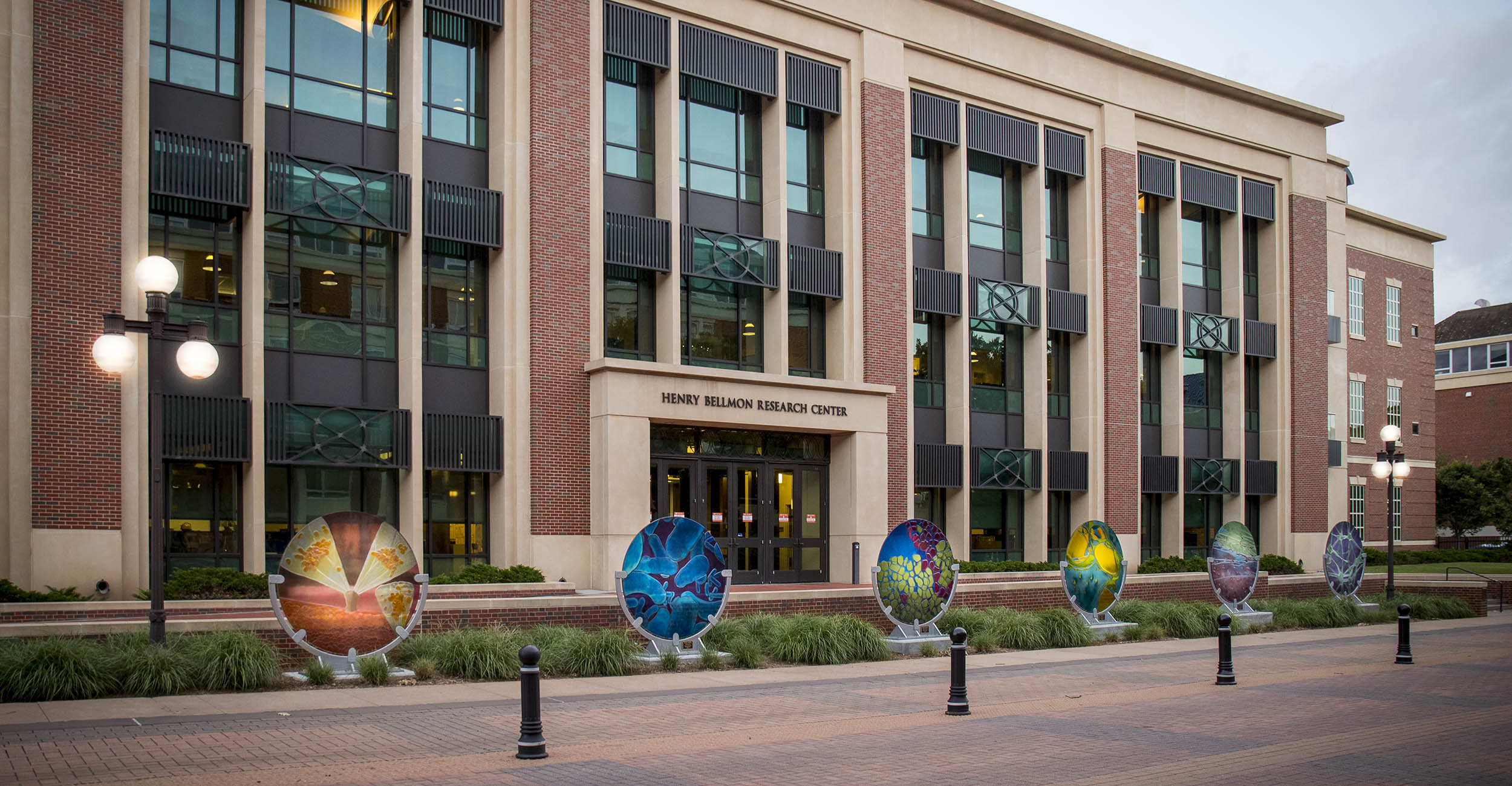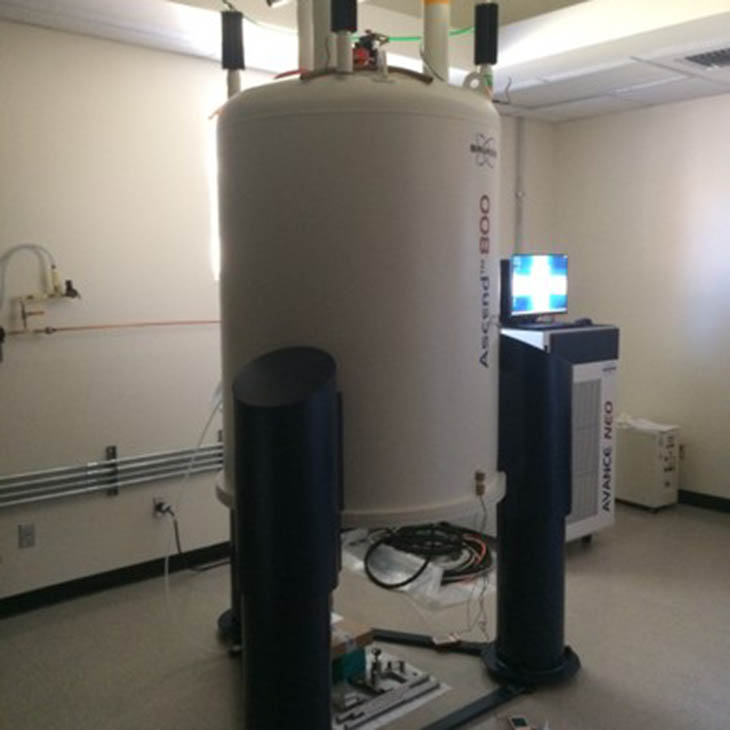
OSU Lab Opens Doors to Collaborative Opportunities
Wednesday, December 8, 2021
Media Contact: Kim Mullins | Communications Coordinator | 405-744-3546 | kim.mullins@okstate.edu
As a modern land-grant university, research is synonymous with Oklahoma State University.
Within the Henry Bellmon Research Center lives five key tools to researchers across the state — Nuclear Magnetic Resonance (NMR) machines.
The crown jewel of the lab is an NEO 800 MHz NMR machine, the only one in Oklahoma.
“It is the Ferrari of NMRs,” said Dr. Jimmy Weaver, OSU associate professor in the Department of Chemistry. “NMRs are kind of like a magnifying glass. The higher the strength, the higher the zoom-in, the higher the sensitivity, thus the higher the field strength.”

The main difference between the 800MHz and the 300MHz is time, which seems to be the one thing NMRs can’t identify; the NEO 800MHz takes five minutes to identify a solution, the 400MHz may take two to six hours depending on the material being tested, Weaver said.
“Nuclear Magnetic Resonance spectroscopy is an analytical chemistry technique used in quality control and research for determining the content and purity of a sample, as well as its molecular structure,” said Enrique Alvarez, OSU graduate research assistant. “In other words, companies and universities could use NMR technology to analyze the purity of certain compounds or their molecular structure.”
Samples of a material are loaded into a test tube then placed into the NMR machine. The NMR then analyzes the chemical makeup and a report is generated reflecting the readings, Alvarez said.
The NMR machines are housed in the research center’s lab. Each machine may be used by OSU researchers, but off-campus researchers may also rent the lab space and NMRs.
“NMRs on college campuses are fairly common,” Weaver said. “Offering the use of our NMR machines makes sense for a university. A smaller company or lab wouldn’t have the funds to buy an NMR, so for a fee they can use ours, it’s a win-win. Especially those entities on a shoestring budget, it makes sense to use ours.”
The OSU NMR facility has five machines available for use; fees and pricing are set per hour. The lab houses an experienced technician to assist with the machines — though a training certification may be acquired for use of the machine without an OSU assistant.
“Each NMR has complementary capabilities,” he said. “The NEO 800MHz also cuts down on noise because of its cryogenically cooled probe, which allows for a better signal to noise ratio.”
The bigger the machine, the more precise the results will be depending on what test is initiated and what samples are being used. Anything from organic to synthetic material can be tested.
Important factors such as needs and options determined the decision for more NMR machines.
The German made Brũker NMR machines were gifted through donations contributed in 1996 and 1997. The 400MHz was installed in 2013 and the 800MHz was installed in 2020. Recently, the 300MHz was added to the fleet.
The NMR lab allows campus researchers access to state-of-the-art technology. Renting out the use of the facility and the NMRs bridges a gap for collaboration between OSU and the nation.
"The NMR facility is one of the unique assets on campus that can be accessed by industry to conduct research and development activities,” said Zach Miles, director of Cowboy Innovations. “The lab allows companies to access needed analysis equipment that may otherwise be inaccessible. This is one of the efforts of OSU, to make these unique facilities more visible and accessible to the research and innovation community.”
